

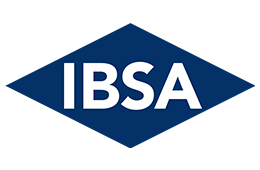
Challenge An estimated 27 million Americans have thyroid disease, but half of these people go undiagnosed or misdiagnosed.1 For those who are diagnosed, 47% of people taking traditional tablet medications have at least one condition that can negatively impact their levothyroxine tablet therapy,2 leaving them to still not feel well. IBSA turned to PHG to help bring awareness to the situation and the fact that Tirosint-SOL is a simple, effective way to get relief without the side effects.
Solution PHG connected with talent agency Wasserman to find Aza Muñoz – an LPGA golfer who had recently been diagnosed with Hashimoto’s Thyroiditis. Even on hypothyroidism medication, she still had body aches and could not perform at her highest level on the Tour. But after being prescribed Tirosint-SOL, Muñoz felt back to normal — with the energy to return to competition. IBSA and Muñoz wanted to increase awareness of hypothyroidism and Tirosint-SOL in order to help more people.
PHG and IBSA developed a campaign to get Muñoz’ story out into the world. PHG scheduled a full-day video shoot at Muñoz’ home course and recorded a long form testimonial video, a commercial and a “How To Take Tirosint-SOL” administration video.
PHG extended the content by developing organic boosted Facebook / Instagram ads and a new home page on the Tirosint-SOL website that featured Aza’s story. The page and all its assets were also translated into Spanish. All assets including video, social and web content were produced in both English and Spanish.
The partnership was announced the week prior to Munoz’ return to the LPGA tour with a press release to golf enthusiasts and publications, and consumer and trade media. We supported the public relations efforts with paid social media, as well as posts and tweets by Muñoz.
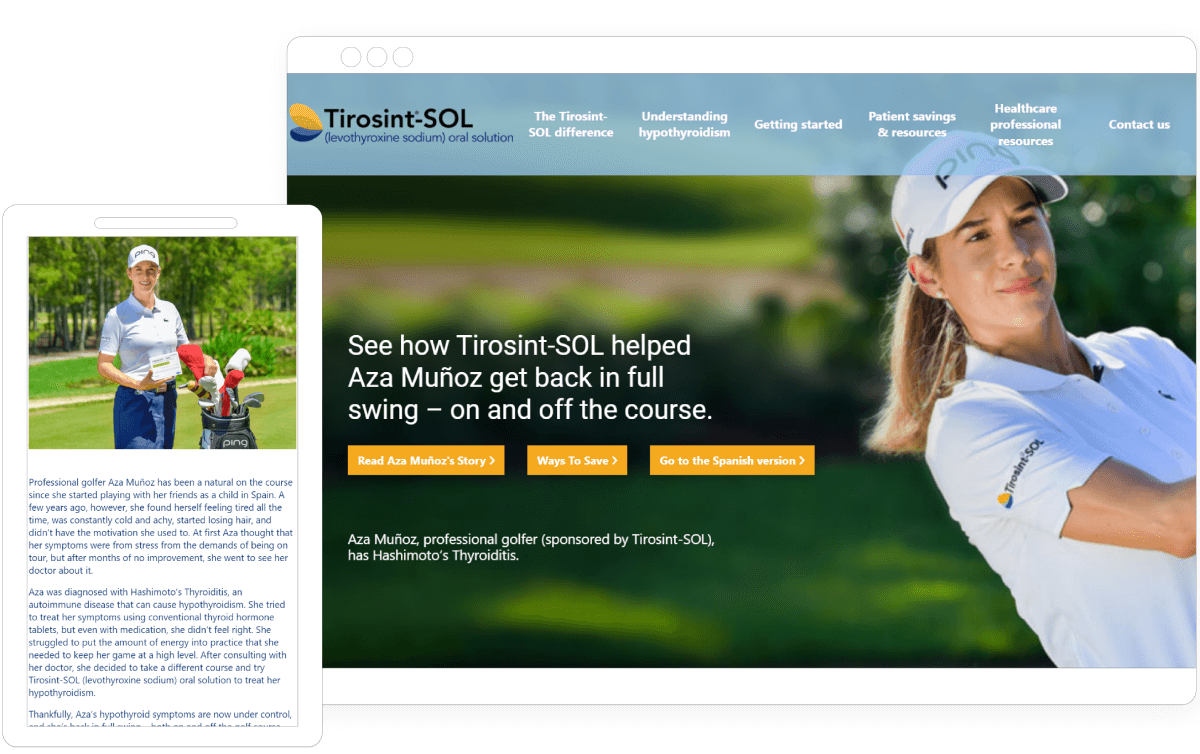
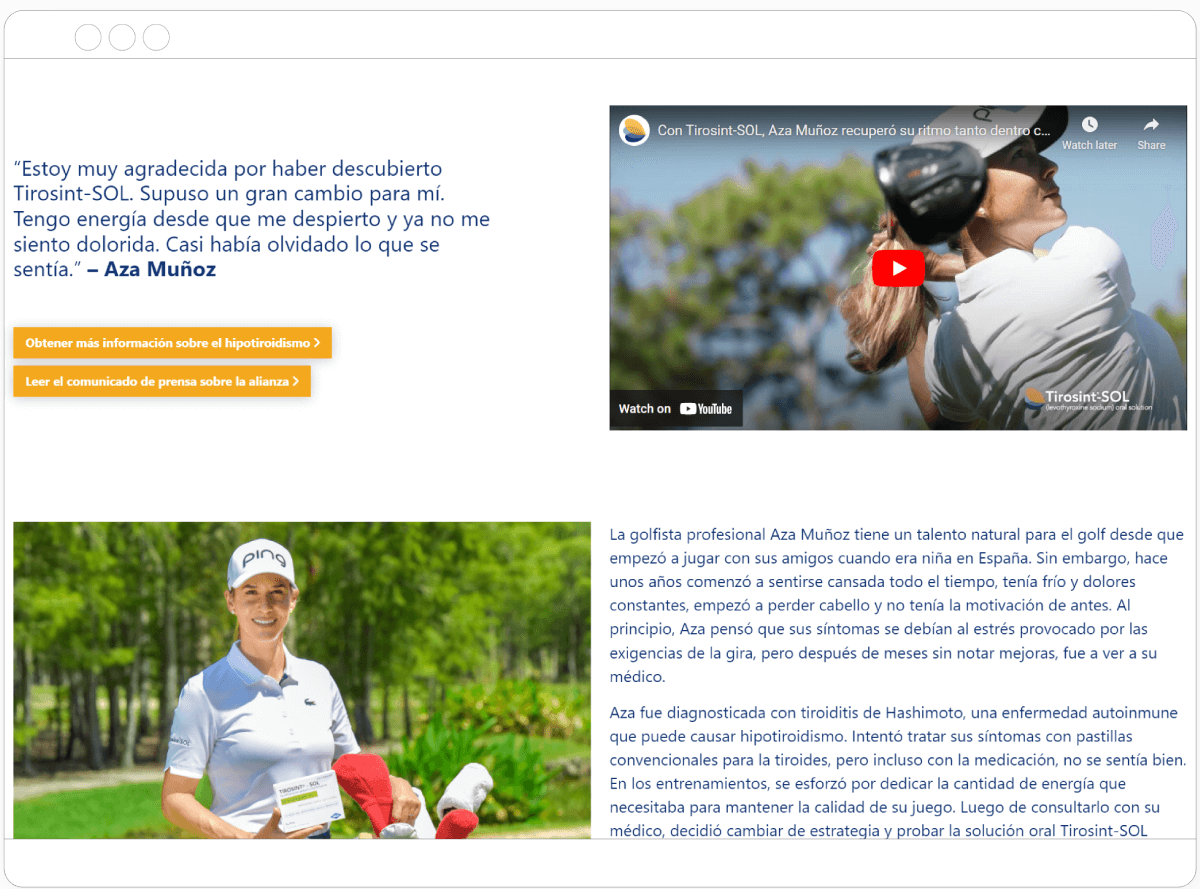
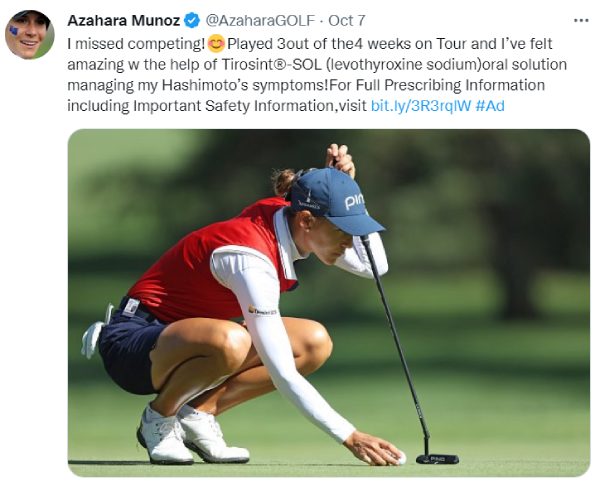

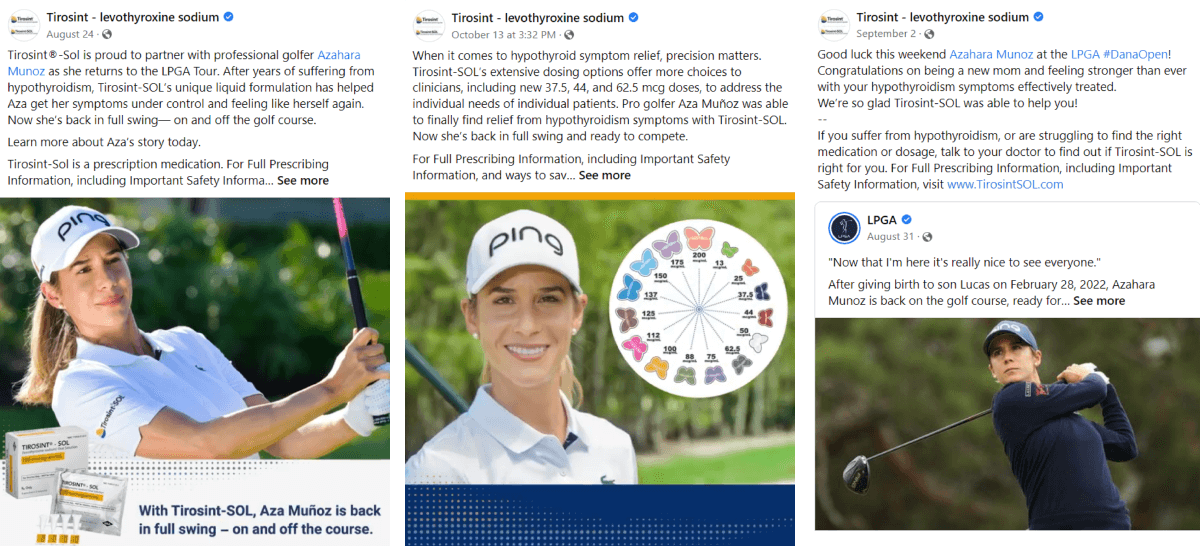
1. National Endocrine and Metabolic Disease Information Service (National Institute of Health), May, 2011
2. McMillan M, et al. Comorbidities, concomitant medications and diet as factors affecting levothyroxine therapy; results of the CONTROL Surveillance Project. Drugs in R&D. 2015;16(1):53-68.